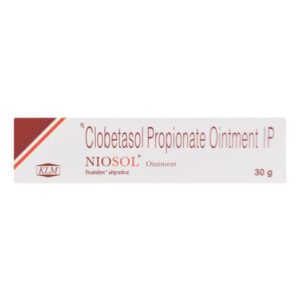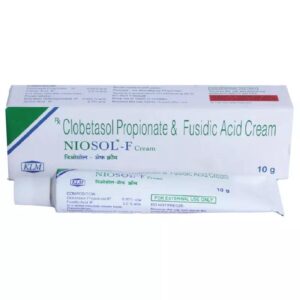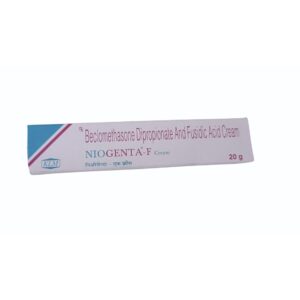CLOBETASOL + FUSIDIC ACID
Clobetasol: Clobetasol, also known as Clobetasol propionate, is a potent corticosteroid drug used topically to treat various skin conditions. It belongs to the class of drugs called glucocorticoids.
Clobetasol works by reducing inflammation, itching, and redness associated with a variety of skin disorders. It does this by inhibiting the activity of certain substances in the body that cause inflammation and allergic reactions.
The drug is available in several forms, including cream, ointment, foam, and lotion. It is commonly prescribed to treat conditions such as eczema, psoriasis, dermatitis, and certain types of skin allergies.
The dose of clobetasol varies depending on the specific condition being treated and the form of the medication. Generally, a small amount of the cream or ointment is applied to the affected area once or twice daily. It is important to follow the instructions provided by the healthcare professional and not exceed the prescribed dose.
While clobetasol is effective in relieving symptoms, it can also cause some side effects. Common side effects of clobetasol include skin irritation, burning, itching, or dryness at the application site. Prolonged use or excessive amounts of the drug can lead to skin thinning, stretch marks, or changes in skin color. It may also cause systemic side effects when used in large amounts or on extensive areas of the body, including adrenal suppression, Cushing’s syndrome, and increased susceptibility to infections.
It is important to use clobetasol exactly as prescribed and for the prescribed duration. Long-term use should be avoided unless directed by a healthcare professional. If any severe side effects or allergic reactions occur, such as rash, swelling, or difficulty breathing, immediate medical attention should be sought.
Fusidic Acid: Fusidic Acid is an antibiotic drug that is used to treat bacterial infections. It is primarily used to treat skin infections caused by bacteria, such as impetigo, infected eczema, and infected wounds.
The mechanism of action of Fusidic Acid involves inhibiting bacterial protein synthesis. It binds to a specific site on the bacterial ribosome, preventing the release of the growing peptide chain from the ribosome. This leads to the disruption of bacterial protein synthesis, ultimately killing the bacteria and stopping the spread of infection.
Fusidic Acid is commonly available as a cream or ointment. The usual dose for adults and children over the age of 1 year is to apply a small amount of cream or ointment to the affected area three to four times a day. The treatment period generally lasts for 7 to 10 days. It is important to follow the instructions provided by the healthcare professional and complete the full course of treatment even if the symptoms improve.
While Fusidic Acid is generally well-tolerated, like any medication, it may have some side effects. The most common side effects include skin irritation, itching, redness, and burning sensation at the application site. These side effects are usually mild and temporary. In rare cases, allergic reactions may occur, characterized by severe skin itching, swelling, or difficulty breathing. If any severe or persistent side effects occur, it is important to seek medical attention.
It is worth noting that Fusidic Acid should be used with caution in patients with a history of liver disease or with concomitant use of other medications that may affect liver function. It is important to inform the healthcare professional about any other medications being taken to prevent any potential drug interactions.
Overall, Fusidic Acid is an effective antibiotic that is used to treat various skin infections caused by bacteria. It is important to use the medication as directed and complete the full course of treatment to ensure the infection is completely cleared.



